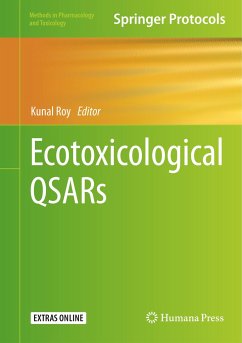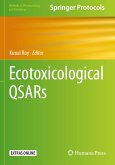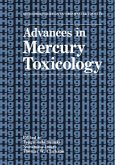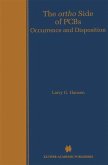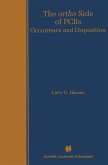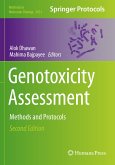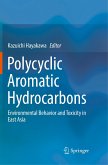Ecotoxicological QSARs
Herausgegeben:Roy, Kunal
Ecotoxicological QSARs
Herausgegeben:Roy, Kunal
- Gebundenes Buch
- Merkliste
- Auf die Merkliste
- Bewerten Bewerten
- Teilen
- Produkt teilen
- Produkterinnerung
- Produkterinnerung
This volume focuses on computational modeling of the ecotoxicity of chemicals and presents applications of quantitative structure-activity relationship models (QSARs) in the predictive toxicology field in a regulatory context. The extensive book covers a variety of protocols for descriptor computation, data curation, feature selection, learning algorithms, validation of models, applicability domain assessment, confidence estimation for predictions, and much more, as well as case studies and literature reviews on a number of hot topics. Written for the Methods in Pharmacology and Toxicology…mehr
Andere Kunden interessierten sich auch für
![Ecotoxicological QSARs Ecotoxicological QSARs]() Ecotoxicological QSARs134,99 €
Ecotoxicological QSARs134,99 €![Advances in Mercury Toxicology Advances in Mercury Toxicology]() Tsuguyoshi Suzuki / Nobumasa Imura / Thomas W. Clarkson (Hgg.)Advances in Mercury Toxicology153,99 €
Tsuguyoshi Suzuki / Nobumasa Imura / Thomas W. Clarkson (Hgg.)Advances in Mercury Toxicology153,99 €![The ortho Side of PCBs The ortho Side of PCBs]() Larry G. HansenThe ortho Side of PCBs112,99 €
Larry G. HansenThe ortho Side of PCBs112,99 €![The ortho Side of PCBs The ortho Side of PCBs]() Larry G. HansenThe ortho Side of PCBs116,99 €
Larry G. HansenThe ortho Side of PCBs116,99 €![Genotoxicity Assessment Genotoxicity Assessment]() Genotoxicity Assessment90,99 €
Genotoxicity Assessment90,99 €![Polycyclic Aromatic Hydrocarbons Polycyclic Aromatic Hydrocarbons]() Polycyclic Aromatic Hydrocarbons112,99 €
Polycyclic Aromatic Hydrocarbons112,99 €![Chemical Carcinogens Chemical Carcinogens]() Marcel CastegnaroChemical Carcinogens77,99 €
Marcel CastegnaroChemical Carcinogens77,99 €-
-
-
This volume focuses on computational modeling of the ecotoxicity of chemicals and presents applications of quantitative structure-activity relationship models (QSARs) in the predictive toxicology field in a regulatory context. The extensive book covers a variety of protocols for descriptor computation, data curation, feature selection, learning algorithms, validation of models, applicability domain assessment, confidence estimation for predictions, and much more, as well as case studies and literature reviews on a number of hot topics. Written for the Methods in Pharmacology and Toxicology series, chapters include the kind of practical advice that is essential for researchers everywhere.
Authoritative and comprehensive, Ecotoxicological QSARs is an ideal source to update readers in the field with current practices and introduce to them new developments and should therefore be very useful for researchers in academia, industries, and regulatory bodies.
Authoritative and comprehensive, Ecotoxicological QSARs is an ideal source to update readers in the field with current practices and introduce to them new developments and should therefore be very useful for researchers in academia, industries, and regulatory bodies.
Produktdetails
- Produktdetails
- Methods in Pharmacology and Toxicology
- Verlag: Humana / Springer US / Springer, Berlin
- Artikelnr. des Verlages: 978-1-0716-0149-5
- 1st edition 2020
- Seitenzahl: 852
- Erscheinungstermin: 17. Januar 2020
- Englisch
- Abmessung: 260mm x 183mm x 51mm
- Gewicht: 1751g
- ISBN-13: 9781071601495
- ISBN-10: 1071601490
- Artikelnr.: 57473785
- Herstellerkennzeichnung
- Springer-Verlag GmbH
- Tiergartenstr. 17
- 69121 Heidelberg
- ProductSafety@springernature.com
- Methods in Pharmacology and Toxicology
- Verlag: Humana / Springer US / Springer, Berlin
- Artikelnr. des Verlages: 978-1-0716-0149-5
- 1st edition 2020
- Seitenzahl: 852
- Erscheinungstermin: 17. Januar 2020
- Englisch
- Abmessung: 260mm x 183mm x 51mm
- Gewicht: 1751g
- ISBN-13: 9781071601495
- ISBN-10: 1071601490
- Artikelnr.: 57473785
- Herstellerkennzeichnung
- Springer-Verlag GmbH
- Tiergartenstr. 17
- 69121 Heidelberg
- ProductSafety@springernature.com
Dr. Kunal Roy is a Professor in the Department of Pharmaceutical Technology, Jadavpur University, Kolkata, India. He has been a recipient of Commonwealth Academic Staff Fellowship (University of Manchester, 2007) and Marie Curie International Incoming Fellowship (University of Manchester, 2013). The fields of his research interest are Quantitative Structure-Activity Relationship (QSAR) and Chemometric Modelingwith application in Drug Design and Ecotoxicological Modeling. Dr. Roy has published about 300 research articles in refereed journals (current SCOPUS h index 40; SCOPUS Author ID 56962764800). He has also coauthored two QSAR related books (Academic Press and Springer), edited five QSAR books (Springer, Academic Press and IGI Global) and published twelve book chapters. Dr. Roy is a Co-Editor-in-Chief of Molecular Diversity (Springer Nature) and Editor-in-Chief of International Journal of Quantitative Structure-Property Relationships (IGI Global). He also serves in different capacities in the Editorial Boards of several International Journals.
Ecotoxicological Risk Assessment in the Context of Different EU Regulations.- A Brief Introduction to Quantitative Structure-Activity Relationships as Useful Tools in Predictive Ecotoxicology.- Best Practices for Constructing Reproducible QSAR Models.- Wildlife Sentinels for Human and Environmental Health Hazards in Ecotoxicological Risk Assessment.- Importance of Data Curation in QSAR Studies Especially While Modeling Large-Size Data Sets.- Machine Learning and Deep Learning Methods in Ecotoxicological QSAR Modeling.- Use of Machine Learning and Classical QSAR Methods in Computational Ecotoxicology.- On the Relevance of Feature Selection Algorithms While Developing Non-Linear QSARs.- Got to Write a Classic: Classical and Perturbation-Based QSAR Methods, Machine Learning, and the Monitoring of Nanoparticles Ecotoxicity.- Ecotoxicological QSAR Modeling of Nanomaterials: Methods in 3D-QSARs and Combined Docking Studies for Carbon Nanostructures.- Early Prediction of Ecotoxicological Side-Effects of Pharmaceutical Impurities Based on Open-Source Non-Testing Approaches.- Conformal Prediction for Ecotoxicology and Implications for Regulatory Decision Making.- Read-Across for Regulatory Ecotoxicology.- Methodological Protocol for Assessing the Environmental Footprint by Means of Ecotoxicological Tools: Wastewater Treatment Plants as an Example Case.- Development of Baseline Quantitative Structure-Activity Relationships (QSARs) for the Effects of Active Pharmaceutical Ingredients (APIs) to Aquatic Species.- Ecotoxicological QSARs of Personal Care Products and Biocides.- Computational Approaches to Evaluate Ecotoxicity of Biocides: Cases from the Project COMBASE.- QSAR Modeling of Dye Ecotoxicity.- Ecotoxicological QSARs of Mixtures.- QSPR Modeling of Adsorption of Pollutants by Carbon Nanotubes (CNTs).- Ecotoxicological QSAR Modeling of Organophosphorus and Neonicotinoid Pesticides.- QSARs and Read-Across for Thiochemicals: A Case Study of UsingAlternative Information for REACH Registrations.- In Silico Ecotoxicological Modeling of Pesticide Metabolites and Mixtures.- Combination of Read-Across and QSAR for Ecotoxicity Prediction: A Case Study of Green Algae Growth Inhibition Toxicity Data.- QSAR Approaches and Ecotoxicological Risk Assessment.- Multi-Scale QSAR Approach for Simultaneous Modeling of Ecotoxic Effects of Pesticides.- Quantitative Structure-Toxicity Relationship Models Based on Hydrophobicity and Electrophilicity.- Environmental Toxicity (Q)SARs for Polymers as an Emerging Class of Materials in Regulatory Frameworks, with a Focus on Challenges and Possibilities Regarding Cationic Polymers.- Ecotoxicity Databases for QSAR Modeling.- VEGAHUB for Ecotoxicological QSAR Modeling.- Enalos Cloud Platform: Nanoinformatics and Cheminformatics Tools.- alvaDesc: A Tool to Calculate and Analyze Molecular Descriptors and Fingerprints.
Ecotoxicological Risk Assessment in the Context of Different EU Regulations.- A Brief Introduction to Quantitative Structure-Activity Relationships as Useful Tools in Predictive Ecotoxicology.- Best Practices for Constructing Reproducible QSAR Models.- Wildlife Sentinels for Human and Environmental Health Hazards in Ecotoxicological Risk Assessment.- Importance of Data Curation in QSAR Studies Especially While Modeling Large-Size Data Sets.- Machine Learning and Deep Learning Methods in Ecotoxicological QSAR Modeling.- Use of Machine Learning and Classical QSAR Methods in Computational Ecotoxicology.- On the Relevance of Feature Selection Algorithms While Developing Non-Linear QSARs.- Got to Write a Classic: Classical and Perturbation-Based QSAR Methods, Machine Learning, and the Monitoring of Nanoparticles Ecotoxicity.- Ecotoxicological QSAR Modeling of Nanomaterials: Methods in 3D-QSARs and Combined Docking Studies for Carbon Nanostructures.- Early Prediction of Ecotoxicological Side-Effects of Pharmaceutical Impurities Based on Open-Source Non-Testing Approaches.- Conformal Prediction for Ecotoxicology and Implications for Regulatory Decision Making.- Read-Across for Regulatory Ecotoxicology.- Methodological Protocol for Assessing the Environmental Footprint by Means of Ecotoxicological Tools: Wastewater Treatment Plants as an Example Case.- Development of Baseline Quantitative Structure-Activity Relationships (QSARs) for the Effects of Active Pharmaceutical Ingredients (APIs) to Aquatic Species.- Ecotoxicological QSARs of Personal Care Products and Biocides.- Computational Approaches to Evaluate Ecotoxicity of Biocides: Cases from the Project COMBASE.- QSAR Modeling of Dye Ecotoxicity.- Ecotoxicological QSARs of Mixtures.- QSPR Modeling of Adsorption of Pollutants by Carbon Nanotubes (CNTs).- Ecotoxicological QSAR Modeling of Organophosphorus and Neonicotinoid Pesticides.- QSARs and Read-Across for Thiochemicals: A Case Study of UsingAlternative Information for REACH Registrations.- In Silico Ecotoxicological Modeling of Pesticide Metabolites and Mixtures.- Combination of Read-Across and QSAR for Ecotoxicity Prediction: A Case Study of Green Algae Growth Inhibition Toxicity Data.- QSAR Approaches and Ecotoxicological Risk Assessment.- Multi-Scale QSAR Approach for Simultaneous Modeling of Ecotoxic Effects of Pesticides.- Quantitative Structure-Toxicity Relationship Models Based on Hydrophobicity and Electrophilicity.- Environmental Toxicity (Q)SARs for Polymers as an Emerging Class of Materials in Regulatory Frameworks, with a Focus on Challenges and Possibilities Regarding Cationic Polymers.- Ecotoxicity Databases for QSAR Modeling.- VEGAHUB for Ecotoxicological QSAR Modeling.- Enalos Cloud Platform: Nanoinformatics and Cheminformatics Tools.- alvaDesc: A Tool to Calculate and Analyze Molecular Descriptors and Fingerprints.

